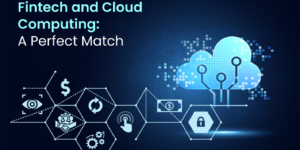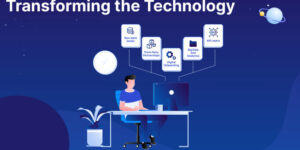
Web development is a rapidly growing industry that has grown in significance in recent years. The emergence of smartphones has played a major role in this growth, as people now use their phones for everything from checking the news to banking to shopping.
As internet use has become more widespread, the demand for well-designed and functional websites has also increased. Users increasingly demand websites to be easy to use, responsive, and visually appealing. They also want websites to be able to provide them with a personalized experience.
Web development has evolved to meet these demands. In the early days of the internet, websites were simple and static. However, today’s websites are often complex and dynamic, with features like interactive maps, video streaming, and social media integration.
In this blog post, we will discuss the importance of web development in today’s world and the latest trends to watch out for. Whether you’re a business owner or a tech enthusiast, keep reading to make the most of these current trends!
Embracing the Future: The Latest Trends of Web Development
In the dynamic realm of technology, web development continues to evolve at an astonishing pace. As we journey into the future, staying updated with the latest trends in web development is not just a choice but a necessity. These trends shape the way we design, create, and interact with websites and applications, enhancing user experiences and driving innovation. Let’s embark on a journey to uncover the most impactful and exciting trends that are reshaping the landscape of web development.
1. Progressive Web Apps (PWAs)
Progressive web apps (PWAs) are a relatively new technology that allows developers to create web apps that can be installed on a user’s device and used like native apps. Big names like Tinder, Uber, Starbucks, Forbes, Twitter (X) and AliExpress use these kinds of apps either as a standalone solution or alongside their mobile apps.
The key advantage of Progressive Web Apps is their wide compatibility. This means you can build an app with one set of code and make it work on different platforms. This makes it a great choice for quickly getting an app that’s functional and cost-effective.
Web applications are beneficial since they can be accessed from anywhere in the world, on any internet-connected device, at any time. A creative website development company can provide the complete service packaging of both desktop applications and web apps, with the added benefit of web apps being available from anywhere with an internet connection.
On average, Progressive Web Apps boost conversions by 52%.
2. Single Page Applications (SPAs)
A Single Page Application (SPA) is a type of web application that functions entirely within one web page. It downloads all the necessary code and content to operate.
This innovative web development approach is particularly useful for services where users spend extended periods on a single page or engage in various actions. Examples include activities like checking and marking emails as spam (like in Gmail), writing posts and comments, watching series (as in Netflix), or curating thematic image boards (as in Pinterest).
New SPA options have been recently evolving, such as Mint and Rust. Take Mint, for instance, which not only acts as a library but also as a new language designed specifically for SPA development. The central concept behind Mint is to eliminate runtime errors. Another notable choice is Rust. While not a new programming language, Rust has emerged as a viable alternative that can complement or even replace parts of the JavaScript ecosystem.
Compared to traditional web applications, SPAs load entire pages faster, and only a 1-second improvement in loading time can result in a 2% increase in conversions.
3. Motion UI and Microinteractions
These are elements that website visitors might not consciously think about, but they definitely appreciate when experiencing your site. Motion UI and micro-interactions are gaining popularity due to their ability to add depth, interactivity, and visual appeal to websites. Motion UI employs animations and transitions to animate elements and guide users’ focus, enhancing their engagement and intuition within the user experience.
Micro-interactions, on the other hand, are those small animations that provide subtle feedback to visitors on a website. Think about button animations, form validation signals, and hover effects. You’ve probably encountered some micro-interactions, such as changes in colour or images when hovering over a link or icon. They serve as effective tools to grab a visitor’s attention and encourage interaction.
Integrating motion UI and micro-interactions into your web development projects enhances the interactivity and enjoyment of your websites and applications for users.
4. Voice Search Optimization
Voice search is a component of voice recognition technology that enables users to initiate searches through direct communication with their devices or by giving voice commands using natural language. These devices encompass smartphones, tablets, laptops, computers, and smart home devices equipped with IoT capabilities.
Voice search was first introduced by Google in 2011, but it was initially more of a novelty than a feature that users relied on. However, improvements in speech recognition technology have made voice search much more popular in recent years. A study by Backlinko found that 41% of adults use voice search at least once per day.
Optimising for voice search entails positioning your webpage at the top of search results when queries are spoken. This requires a distinct content strategy compared to traditional text-based searches. Strategies include tailoring website content to user personas, ensuring mobile-friendly website design, incorporating conversational and long-tail keywords, emphasising local SEO, and optimising data.
5. Augmented Reality (AR) and Virtual Reality (VR)
Augmented reality (AR) and virtual reality (VR) are two emerging technologies that are quickly changing the way we interact with the world around us. AR overlays digital information in the real world, while VR creates a completely immersive virtual environment.
Think of VR as a way to completely dive into a virtual world. When you put on a special headset, you’re transported to a digital space that feels incredibly real. Gamers love this because they can feel like they’re right inside the game. But VR is also helping in places like hospitals, where it’s used to help patients deal with pain and anxiety.
AR, on the other hand, overlays digital content in the real world. This can be done through a smartphone, tablet, or headset. AR is also being used in a variety of industries, including advertising, retail, and education.
Both VR and AR are still in their early phases of growth, but they could completely change how we connect with the world. As these technologies keep advancing, we can look forward to discovering even more creative and fascinating ways to use them in the future.
Also See: AR Glasses vs AR Headsets
6. Cybersecurity and Privacy Measures
As data breaches, hacking, and malware attacks become increasingly sophisticated, staying proactive and watchful in the fight against cybercrime is critical.
For those unfamiliar with the term, cybersecurity involves safeguarding computer systems, networks, and data from theft, harm, or unauthorised access. Practising effective data security and privacy ensures compliance with laws and financial standards and fosters trust in a company. The pandemic sped up the trend of using the cloud and having more devices connected to networks. And there are now more IoT (Internet of Things) sensors, which made more things vulnerable to being hacked. Hackers were quick to take advantage of these situations.
7. Artificial Intelligence and Chatbots
Artificial intelligence (AI) and chatbots are making a big impact in ways we might not have imagined before. AI-powered chatbots are making customer service smoother than ever. They can give us quick answers and personalised solutions, no matter the time of day. This means better experiences for us as customers, with problems getting solved faster and more conveniently.
Businesses are leveraging AI and chatbots to optimise their operations. As AI and chatbot technology continues to evolve, we can expect to see even more innovative ways for businesses to use them to improve their operations and interact with their customers. This will allow businesses to use these technologies to automate even more tasks and to provide an even better customer experience.
8. Dark Mode Design
Dark mode design is a popular trend in web design that offers a visually appealing and immersive experience for users. This design feature transforms the background of your device screen into a sleek black or dark grey canvas while keeping text and content in lighter shades. The contrast between the light text and dark background is easier on the eyes and makes it easier to read.
From a development perspective, implementing dark mode requires careful consideration of various elements such as colour schemes, typography, and imagery. Developers need to make sure that the website looks good and is easy to use in both light and dark modes. This means choosing colours and designs that have good contrast and that are readable in both settings.
Aside from its aesthetic and usability benefits, the dark mode can also have environmental advantages. For devices with OLED or AMOLED displays, pixels on dark backgrounds consume less power than their brighter counterparts. This means that using dark mode can extend the battery life of these devices. Additionally, the adoption of dark mode can align with increasing consumer demand for environmentally conscious technology.
9. Serverless Architecture
Serverless architecture is a cloud computing model in which the cloud provider dynamically manages the allocation of server resources. This means that developers do not need to worry about provisioning or managing servers, as the cloud provider will automatically scale the resources up or down as needed. This can save businesses money on server costs, as they only pay for the resources that they use.
Serverless architecture is also known as function as a service (FaaS). In FaaS, developers write code that is triggered by an event. For example, a function might be triggered when a user clicks on a button, or when a new file is uploaded to a server. The function is then executed on the cloud provider’s servers, and the results are returned to the user.
Serverless architecture is a good choice for applications that have unpredictable traffic patterns, or for applications that need to be scalable. It is also a good choice for applications that need to be cost-effective, as serverless architecture can help to reduce server costs.
10. 3D Graphics and WebXR
At its core, WebXR is a powerful technology that is revolutionising the way artists create and presents their work. With WebXR, artists can create immersive 3D experiences that can be accessed through a web browser. This means that artists can reach a global audience with their work, and users can experience it in a more immersive way.
To create a WebXR experience, artists need to use 3D modelling and animation software that supports WebXR. Once the 3D content has been created, it can be exported to a WebXR format and embedded in a web page. When a user visits the web page, they can use a compatible VR headset or AR device to view the 3D content in an immersive environment.
WebXR is still a relatively new technology, but it has the potential to reach a global audience and create experiences that are more engaging and interactive than traditional 2D art.
Conclusion
Expect to see various trends in web development continue into the future, much like they have in the past. If you’re involved in this field, it’s important to stay aware, as some of these trends will have a big impact on your work. Whether you’re getting ready to create a new website for your business or update an existing one, the concepts mentioned here could influence how you go about it.
Keep in mind that how well your website or app is built has a significant effect on how people who are interested in your business interact with it online. This is why it’s a good idea to work with a web agency that knows about the popular web technologies of today and is also up-to-date with the trends that will shape the future of web development. This ensures that your website or app is ready to meet the changing needs of your customers.






